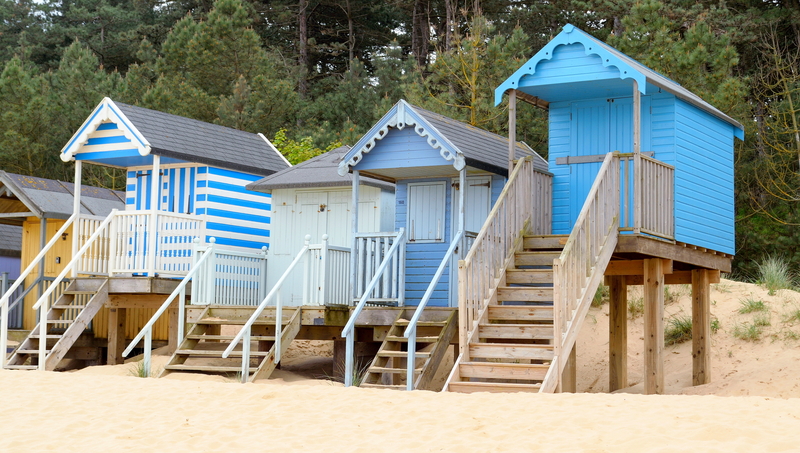Efficient Ways to Declutter When Preparing to Move
Posted on 30/05/2025
Efficient Ways to Declutter When Preparing to Move
Moving is often an exciting milestone - a new home, new opportunities, and possibly a brand new adventure. Yet, before you start picturing your furniture in each room or decorating your new space, there's an important step you shouldn't overlook: decluttering. Efficiently decluttering before a move not only makes packing easier and less stressful but can also significantly cut down your moving costs. In this comprehensive guide, you'll discover strategic tips and efficient methods to declutter your home, ensuring a smooth and organized relocation process.
Why Decluttering Before a Move is Essential
- Saves Time: Sorting through your belongings in advance prevents last-minute chaos and streamlines the packing process.
- Reduces Costs: The fewer items you move, the less you'll spend on moving supplies, transportation, and labor.
- Fresh Start: Moving is the perfect opportunity to shed excess possessions and embrace a more organized lifestyle in your new home.
- Less Stress: An orderly approach minimizes mental burden and makes unpacking in your new place a breeze.
Now, let's dig into the most efficient ways to declutter when preparing to move!

1. Plan Your Decluttering Strategy
Decluttering successfully starts with a solid plan. A clear approach prevents overwhelm and ensures you don't overlook important tasks.
- Make a Timeline: Start decluttering at least a month before your move. Work room by room, devoting specific days to each area.
- Set Decluttering Goals: Set daily or weekly targets. For example, "sort through master bedroom closet by Saturday."
- Gather Supplies: Have boxes, trash bags, labels, and markers on hand for sorting items into categories such as keep, donate, sell, and discard.
Room-by-Room vs. Category-by-Category
Declutter by Room: Tackling one space at a time allows for a focused and organized process. This is particularly effective for larger homes.
Declutter by Category: Inspired by the KonMari Method, this approach involves sorting one type of item (like clothes or books) throughout the entire house before moving on to the next. This can be ideal for smaller homes or apartments.
2. Use the Four-Box Decluttering Method
One of the most efficient decluttering methods involves using four boxes or containers, each labeled:
- Keep: Items you use regularly and will need in your new home.
- Donate: Items in good condition that you no longer need but could benefit others.
- Sell: Valuables you don't use but wish to earn extra cash from.
- Discard: Broken, outdated, or unusable items that should be thrown away or recycled.
Using this method brings clarity to the process, ensuring every item in your home is accounted for and allocated to a specific outcome.
3. Tackle High-Impact Areas First
Some areas, like closets, basements, and attics, tend to collect clutter over time. Begin with these high-impact areas for maximum efficiency.
Closets
- Seasonal Clothing: Donate or sell items you haven't worn in over a year.
- Shoes and Accessories: Keep your favorites, but don't hold onto worn-out or ill-fitting items.
Kitchen
- Expired Food: Discard anything past its prime.
- Duplicate or Unused Appliances: If you haven't used it in the last 6-12 months, consider letting it go.
- Plastic Containers: Recycle any with missing lids or damage.
Garage, Attic, and Basement
- Tools and Equipment: Keep only what you use regularly.
- Holiday Decorations: Discard broken items and pare down duplicates.
- Sentimental Items: Be selective--keep only those with true emotional value.
4. Make Quick Decisions
Indecision is the biggest obstacle to efficient decluttering. Give yourself a time limit per item--if you haven't used it or missed it in a year, it's likely time to part ways. Use the "one-year rule" for most possessions and the "joy test" for sentimental items. If you hesitate, ask yourself: Does this item serve a current purpose or bring happiness?
5. Digitize When Possible
Papers, photos, and documents can create unnecessary bulk during a move. Scan and digitally archive what you can, keeping only essential originals like birth certificates, passports, and legal documents.
- Organize Digital Files: Back up important files on a secure cloud service or external hard drive for safety and easy access.
6. Use the "One-Year Rule"
If you haven't used, worn, or needed an item in a year, it might be safe to let it go. While exceptions exist (heirlooms or seasonal items), this rule dramatically simplifies decisions and reduces emotional attachment.
- Seasonal Rotation: If possible, check last year's seasonal clothing and decor for items you never used.
7. Prioritize Sentimental Items Last
Sentimental items often take the most time to process. Focus on practical items first, and leave photos, memorabilia, and keepsakes for the end of your decluttering process.
- Select Favorites: Instead of keeping every item, select a few meaningful pieces to keep. Photograph others for memory's sake.
- Set Limits: Use a "memory box" to restrict how much sentimental stuff you keep.
8. Sell, Donate, or Recycle Responsibly
As you sort, arrange for pickup or drop off of donated items to local charities. Make use of online sales platforms like eBay, Facebook Marketplace, or Nextdoor for items you wish to sell. Electronics and hazardous materials, like old paint or batteries, should be disposed of according to local regulations.
- Tax Receipts: Don't forget to request receipts for donated goods, which may be tax-deductible.
- Recycle: Use local recycling centers for electronics, batteries, and appliances.
9. Take Inventory as You Go
Maintain a running list of items as you pack, noting box numbers and contents. This not only helps you track what is moving with you but also makes insurance claims and post-move unpacking far more organized.
- Simple Spreadsheets: Use a spreadsheet or moving app to stay on top of your inventory and decluttering progress.
10. Get the Whole Household Involved
Enlist all family members or roommates in the decluttering process. Assign age-appropriate tasks, set collective goals, and celebrate milestones to keep morale high during what can be a taxing process.
- Children: Allow kids to choose which toys and clothes to keep or donate. Teach them about the importance of giving.
- Adults: Share responsibility for communal spaces like the kitchen or living room.
11. Stay Motivated with Quick Wins
Start with easy victories--junk drawers, expired toiletries, or old magazines. Seeing immediate progress can encourage you to tackle more challenging areas.
- Set Timers: Use the "15-Minute Power Session" trick. Set a timer, declutter as much as possible, then take a break.
- Visualize the Goal: Remind yourself of the benefits--less packing, a tidier move, and a fresh start in your new home.
12. Avoid Common Decluttering Pitfalls
- Perfectionism: You don't need to organize everything perfectly. Focus on progress, not perfection.
- Procrastination: Stick to your schedule. The earlier you start, the less stress you'll feel as moving day approaches.
- Holding Onto "Just In Case" Items: Let go of things you rarely use--you can borrow or replace most items if needed.
13. Hire Help if Needed
If time is short, or you're overwhelmed by the scope of your belongings, don't hesitate to hire a professional organizer or moving help. These experts can guide you through efficient decluttering tips tailored to your situation, ensuring you stay on track and within your moving schedule.

14. Prepare for Move Day
As you near your moving date, make a final sweep of each room. Double-check closets, cupboards, and storage spaces for forgotten items. Confirm donation pickups or bulky waste collection in advance to avoid last-minute surprises.
- Essentials Box: Pack a box of immediate necessities (documents, toiletries, medications, chargers) to keep handy during transition.
Final Thoughts: Declutter Effectively for a Smooth Move
Decluttering when preparing to move isn't just about packing less--it's about making thoughtful choices that set the tone for your life in your new home. By starting early, following a structured plan, and making firm decisions, you'll turn overwhelming clutter into a manageable, rewarding process. Whether you're moving locally or cross-country, these efficient ways to declutter will help you move lighter, live better, and fully embrace your new beginning.
Frequently Asked Questions: Efficient Decluttering Before Moving
-
Q: How soon before a move should I begin decluttering?
A: Start at least one month before moving day, allowing a few hours each week for decluttering. -
Q: Should I pack and declutter at the same time?
A: No, always declutter before packing to avoid moving unnecessary items. -
Q: What should I do with items I can't donate or sell?
A: Recycle or dispose of them responsibly according to your local waste guidelines.
Ready to move? Use these efficient decluttering strategies to save time, reduce stress, and start fresh in your new home!



